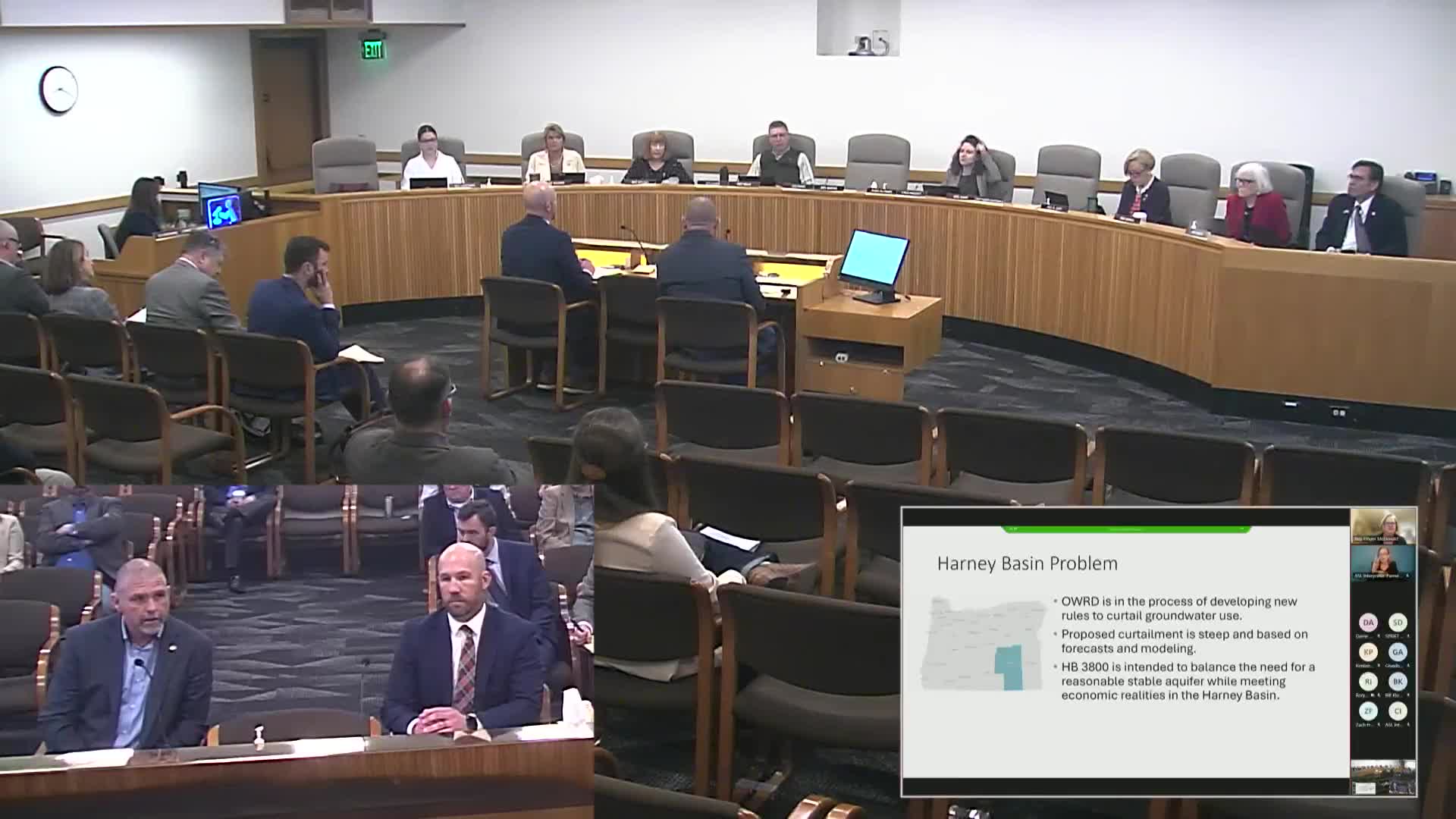Oregon Water Resources Department plans critical groundwater regulation for Harney Basin
March 26, 2025 | Agriculture, Land Use, Natural Resources, and Water, House of Representatives, Committees, Legislative, Oregon
This article was created by AI summarizing key points discussed. AI makes mistakes, so for full details and context, please refer to the video of the full meeting. Please report any errors so we can fix them. Report an error »

The Oregon House Committee on Agriculture, Land Use, Natural Resources, and Water convened on March 26, 2025, to address critical groundwater issues in the Harney Basin, revealing significant challenges in water allocation and management. The committee discussed House Bill 3800, aimed at balancing regulatory and voluntary actions to achieve stable groundwater levels in the region.
Key findings from a recent groundwater study indicated that the basin is over-allocated by approximately 50%, with 268,000 acre-feet of water allocated against a sustainable recharge of only 260,000 acre-feet. This alarming discrepancy has prompted the need for immediate action to ensure the long-term viability of water resources in the area.
The committee emphasized the importance of establishing a critical groundwater designation, which is expected to be finalized by fall 2025. This designation will allow for stricter regulations on water use, including the potential for a contested case process to manage excessive withdrawals. The committee is also advocating for a voluntary agreement framework, which has historically been unsuccessful in Oregon, to encourage cooperative water management among local stakeholders.
In addition to regulatory measures, the committee discussed the need for flexibility in water use rates to enhance irrigation efficiency. Current rates are deemed insufficient for effective agricultural practices, prompting proposals to adjust these rates to better support local farmers.
The meeting also highlighted the necessity of addressing "paper water" rights—water rights that are not actively used—which constitute about 30% of the basin's allocations. The committee aims to cancel unused rights to prioritize water for active agricultural users.
As the committee prepares to finalize amendments to House Bill 3800, they are committed to working closely with the Oregon Water Resources Department to ensure that the proposed regulations reflect the unique needs of the Harney Basin community. The outcome of these discussions will be crucial in shaping the future of water management in the region, with the goal of achieving a sustainable balance between agricultural needs and groundwater conservation.
Key findings from a recent groundwater study indicated that the basin is over-allocated by approximately 50%, with 268,000 acre-feet of water allocated against a sustainable recharge of only 260,000 acre-feet. This alarming discrepancy has prompted the need for immediate action to ensure the long-term viability of water resources in the area.
The committee emphasized the importance of establishing a critical groundwater designation, which is expected to be finalized by fall 2025. This designation will allow for stricter regulations on water use, including the potential for a contested case process to manage excessive withdrawals. The committee is also advocating for a voluntary agreement framework, which has historically been unsuccessful in Oregon, to encourage cooperative water management among local stakeholders.
In addition to regulatory measures, the committee discussed the need for flexibility in water use rates to enhance irrigation efficiency. Current rates are deemed insufficient for effective agricultural practices, prompting proposals to adjust these rates to better support local farmers.
The meeting also highlighted the necessity of addressing "paper water" rights—water rights that are not actively used—which constitute about 30% of the basin's allocations. The committee aims to cancel unused rights to prioritize water for active agricultural users.
As the committee prepares to finalize amendments to House Bill 3800, they are committed to working closely with the Oregon Water Resources Department to ensure that the proposed regulations reflect the unique needs of the Harney Basin community. The outcome of these discussions will be crucial in shaping the future of water management in the region, with the goal of achieving a sustainable balance between agricultural needs and groundwater conservation.
View full meeting
This article is based on a recent meeting—watch the full video and explore the complete transcript for deeper insights into the discussion.
View full meeting
